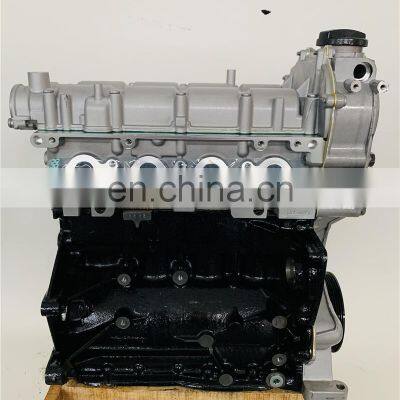Get the best clp engine for your specific needs.
Get the best clp engine for your specific needs.
Blog Article
Exactly How a Clp Engine Can Boost Effectiveness in Various Industries
The arrival of CLP engines notes a significant shift in functional performance throughout various industries, driven by their capability to optimize fuel usage and decrease downtime. As companies increasingly prioritize sustainability alongside effectiveness, the function of CLP engines ends up being even a lot more essential.
Review of CLP Engines
CLP engines, or Continual Fluid Propellant engines, represent a significant advancement in propulsion modern technology, particularly for room applications. These engines make use of a continuous feed system that allows for the continual expulsion of propellant, causing improved effectiveness and efficiency contrasted to traditional solid or hybrid propulsion systems. By maintaining a consistent flow of liquid propellant, CLP engines can attain extra precise drive control, which is crucial for steering spacecraft in different mission circumstances.
The style of CLP engines incorporates sophisticated materials and cutting-edge fuel management systems. clp engine. This causes decreased weight and raised dependability, essential variables for long-duration space objectives. Moreover, the continuous procedure decreases the threat of burning instability, an usual challenge in standard rocket engines.

Benefits in Manufacturing
The production of Continual Liquid Propellant (CLP) engines offers a number of remarkable advantages that improve both performance and cost-effectiveness. Among the primary advantages is the structured production process, which reduces the complexity connected with traditional propulsion systems. By making use of fluid propellant, suppliers can accomplish greater precision in engine performance, causing maximized energy outcome and lowered waste.
Furthermore, CLP engines assist in a greater degree of modularity, enabling much easier assimilation right into numerous manufacturing lines. This flexibility can significantly reduce lead times and boost general functional flexibility. Making use of CLP modern technology likewise has a tendency to decrease the demand for considerable upkeep as a result of less moving components, which translates right into lowered downtime and operational expenses.

Applications in Logistics
Leveraging Continuous Liquid Propellant (CLP) engines in logistics provides considerable advantages in functional performance and integrity. These engines supply a robust solution for numerous transport needs, enabling the smooth motion of items throughout vast ranges. The intrinsic style of CLP engines permits consistent power output, which converts into smoother and extra foreseeable transport schedules.
One of the essential applications of CLP engines in logistics remains check my source in durable products transportation, where they can drive both ground and airborne lorries. Their capability to keep high efficiency under varying load problems makes sure that shipment timelines are fulfilled, therefore boosting customer contentment. Additionally, CLP engines can be incorporated into automated logistics systems, facilitating real-time monitoring and enhancing route planning.
In addition, the longevity of CLP engines decreases upkeep downtime, allowing logistics firms to optimize their functional abilities. This is particularly valuable in warehousing operations, where effectiveness in dealing with and moving products is essential. As logistics proceeds to evolve, the assimilation of CLP engines stands for a forward-thinking technique that not only boosts performance yet additionally sustains the market's expanding demands for dependability and rate.
Effect on Energy Efficiency
Just How do Continual Fluid Propellant (CLP) engines boost energy efficiency in transportation? CLP engines use a regular circulation of fluid fuel, optimizing combustion procedures and preserving a secure thrust output. This design lessens energy losses connected with traditional burning engines, where gas shipment can vary and cause ineffectiveness.
The continuous procedure of CLP engines enables a much more reliable thermal cycle, causing greater particular impulse compared to standard engines. clp engine. This converts to weblink decreased fuel intake for the very same amount of job done, dramatically reducing functional costs across various transportation fields, consisting of aeronautics and maritime markets
Additionally, the capacity of CLP engines to keep optimum performance under differing load problems reduces the need for constant velocity and slowdown, additionally boosting gas performance. Improved energy performance not just adds to set you back financial savings but also results in reduce greenhouse gas emissions, aligning with global sustainability goals.
Future Trends and Innovations
Arising advancements in Constant Fluid Propellant (CLP) engine technology pledge to reinvent the landscape of transport efficiency and sustainability. As markets pivot toward greener choices, CLP engines stand at the center, incorporating cutting-edge products and style methodologies that boost performance while decreasing environmental effect.
One of one of the most appealing trends is the image source fostering of hybrid systems that combine CLP engines with renewable resource resources. This harmony can optimize fuel intake and minimize emissions, straightening with international sustainability goals. In addition, developments in computational fluid dynamics (CFD) are assisting in the design of even more aerodynamically efficient engines, bring about reduced drag and boosted fuel performance.
Furthermore, the growth of smart surveillance systems is set to boost functional efficiencies. These systems take advantage of information analytics and IoT technology to optimize engine efficiency in real-time, guaranteeing that the engines run within their most reliable criteria.
As study proceeds to discover different propellant solutions-- such as biofuels and synthetic gas-- the future of CLP engines looks appealing. By utilizing these developments, sectors can not only enhance their performance but also add significantly to a cleaner, much more lasting future in transportation.
Verdict
In conclusion, CLP engines represent a substantial improvement in efficiency throughout numerous markets. Their capability to maximize fuel consumption and minimize functional costs, incorporated with a constant feed system, improves power result and operational integrity. The combination of innovative products and less moving components minimizes upkeep requirements, while alignment with sustainability objectives positions CLP engines as a crucial innovation for the future. Continued advancement in this field promises further renovations in efficiency and ecological performance.
Report this page